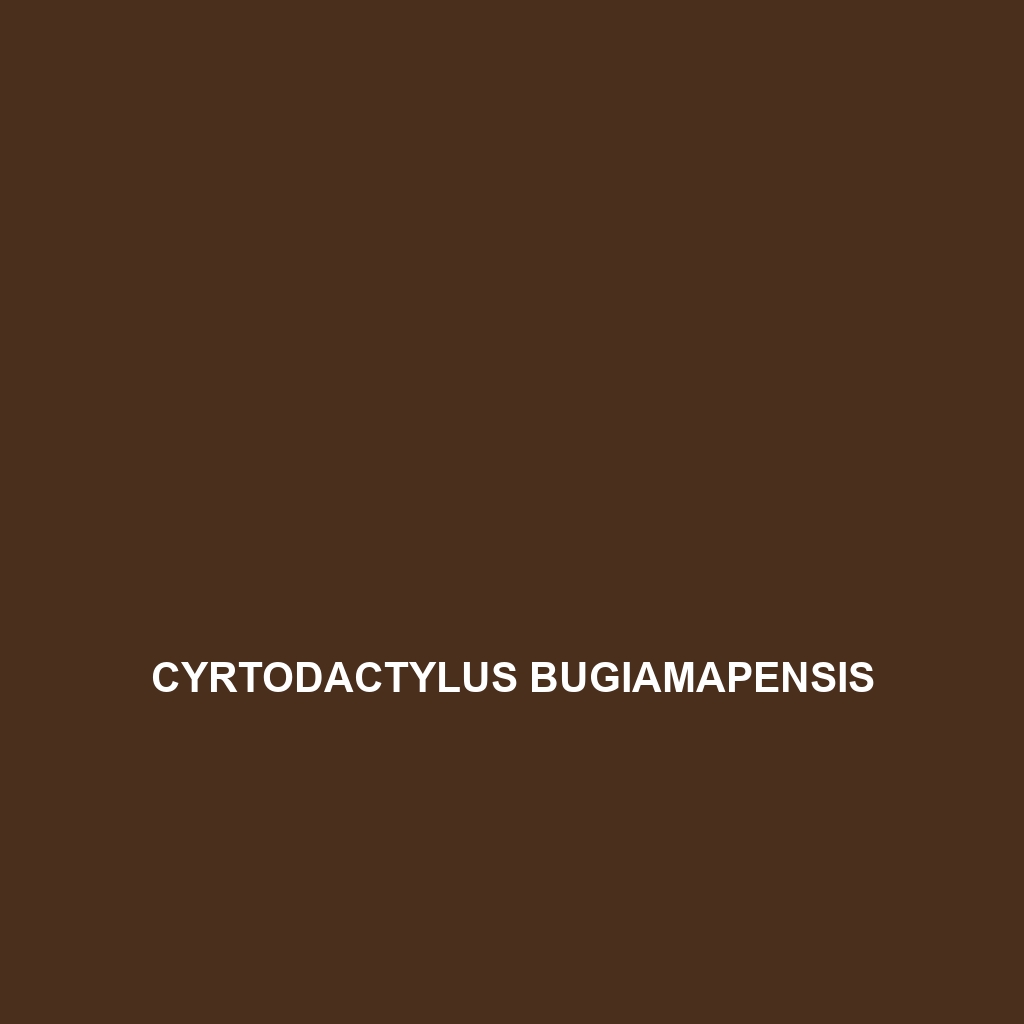Cyrtodactylus zhaoermii, a medium-sized gecko from southern China, thrives in moist, subtropical forests and rocky terrains. This nocturnal insectivore features a flattened head, elongated limbs, and distinct toe pads, allowing it to expertly navigate its rocky habitat while playing a crucial role in pest control and ecosystem balance.
Tag: limestone habitat
Cyrtodactylus phetchaburiensis
The Cyrtodactylus phetchaburiensis, also known as the Phetchaburi bent-toed gecko, is a nocturnal insectivorous species found in the humid tropical forests and limestone hills of Thailand. This vulnerable gecko, notable for its ability to camouflage with its light brown to gray coloration and its climbing skills, plays an essential role in controlling insect populations within its ecosystem.
Cyrtodactylus pageli
Cyrtodactylus pageli is a vulnerable gecko species native to the humid forests of Southeast Asia, characterized by its sandy brown or beige coloration and nocturnal behavior. This slender gecko grows up to 12 cm, preys on insects, and plays a crucial role in controlling local insect populations.
Cyrtodactylus maelanoi
Cyrtodactylus maelanoi is a vulnerable gecko species native to the limestone karst habitats of Southeast Asia, particularly Laos and northern Vietnam. Measuring 10 to 15 cm, this nocturnal insectivore is known for its distinctive coloration, climbing skills, and vital role in maintaining ecological balance.
Cyrtodactylus langkawiensis
Cyrtodactylus langkawiensis, a medium-sized nocturnal gecko found in the limestone hills of Langkawi, Malaysia. With its striking coloration, robust body, and essential role in the ecosystem as an insectivore, this vulnerable species showcases remarkable adaptability and ecological significance.
Cyrtodactylus karsticolus
Cyrtodactylus karsticolus, avulnerable gecko species native to the karst limestone regions of Southeast Asia, including <strong>Malaysia</strong> and <strong>Thailand</strong>. Known for its distinctive camouflage, this nocturnal insectivore plays a crucial role in its ecosystem while exhibiting social behaviors and reproductive adaptations.
Cyrtodactylus elok
Cyrtodactylus elok, commonly known as the Elok Gecko, is a nocturnal, insectivorous reptile native to the humid tropical forests of Southeast Asia, with distinctive reddish-brown to tan coloration and specialized climbing abilities due to its adhesive toe pads. This vulnerable species plays a crucial role in controlling insect populations and serves as a key indicator of ecosystem health.
Cyrtodactylus deveti
The Cyrtodactylus deveti, a vulnerable gecko species from the tropical forests of Southeast Asia, measures 15 to 20 cm and features unique coloration for camouflage. Nocturnal and highly agile, it plays a vital role in controlling insect populations while showcasing fascinating adaptations, such as slight color changes in response to environmental stimuli.</p>
Cyrtodactylus chumuensis
Discover the vibrant Cyrtodactylus chumuensis gecko, a nocturnal species native to the tropical forests of Myanmar and Thailand. With a body length of 15 to 20 cm, its smooth, mottled skin provides excellent camouflage, while its robust limbs and adhesive toe pads enable remarkable climbing abilities.
Cyrtodactylus buchardi
Discover the Cyrtodactylus buchardi, also known as Buchard's bent-toed gecko, a medium-sized gecko native to the humid forests of Southeast Asia. With its distinctive banded pattern and nocturnal behavior, this agile insectivore plays a vital role in controlling insect populations within its ecosystem.









